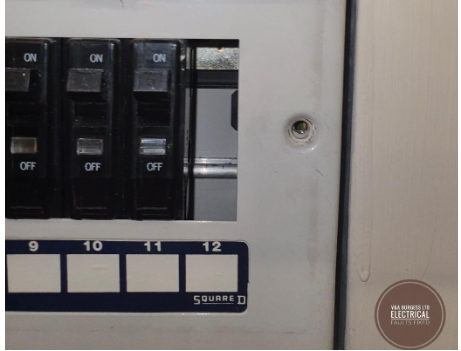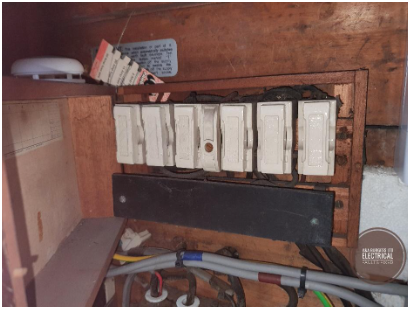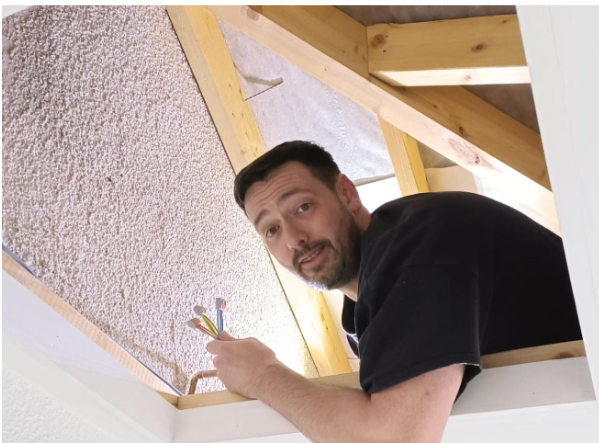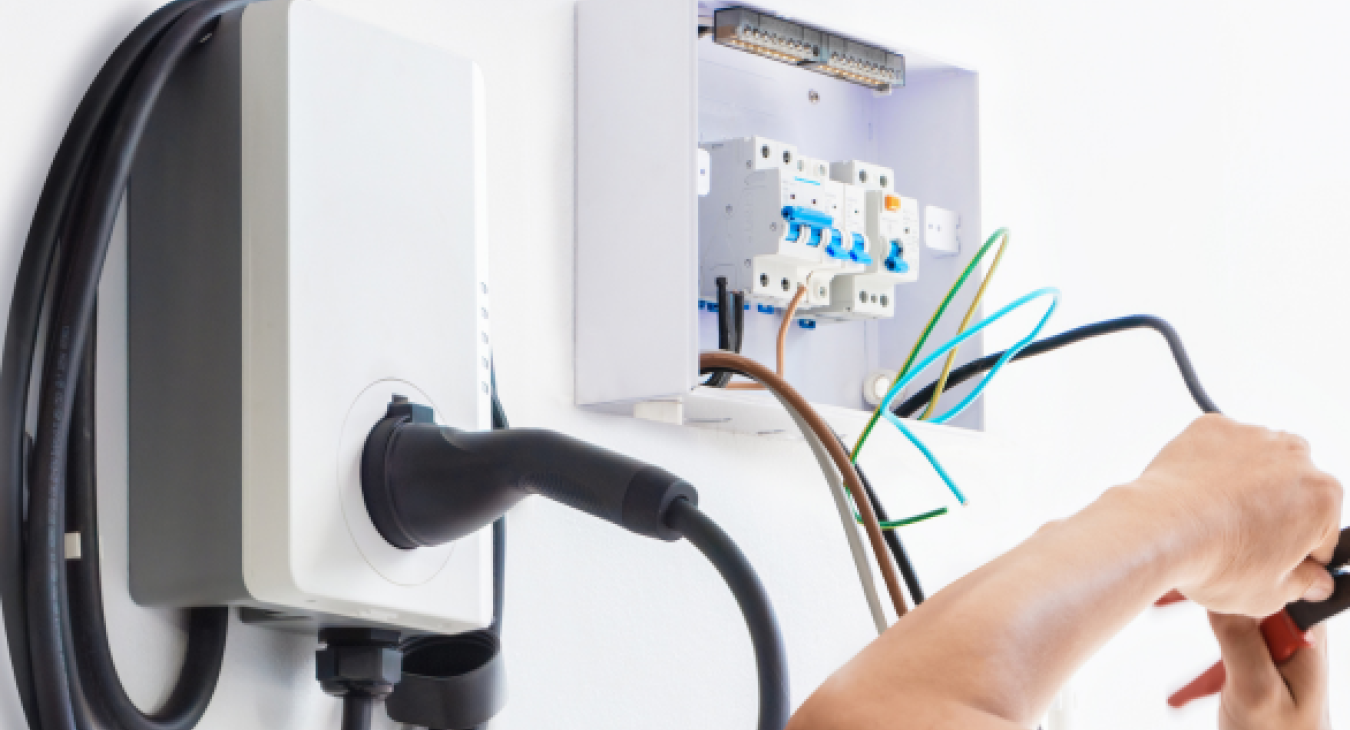Can I add an EV charger to an old fuse box or panel? - Electrical Faults Fixed
With many car owners looking to swap to Electric Vehicles (EV) the demand for at home charging equipment is increasing year on year in North America, the UK and across Europe. Whilst electrical systems differ across these countries, there are similar requirements that need to be met before the installation of high-powered electrical equipment such as EV chargers can be safely installed.
Table of Contents
- The Basics: Home Charging Equipment and their requirements
- Assessing the condition of the current electrical system
- Current wiring and safety standards
- Earthing Requirements and Safety Concerns
- The capability of the mains supply equipment
- Upgrading the consumer unit, fuse box or electrical panel
- Installing a dedicated circuit for the home charger
- Load management and maximum demand
- Professional Installation
- Cost considerations
- Permissions and utility supplier involvement
- Future proofing and additional electrical loads
With many homes having outdated electrical equipment, wiring and in particular fuse boxes, there may be some concerns to address before the installation and use of such equipment to ensure that the system can cope with the demands. Can we have an OLD FUSE BOX AND HOME CHARGER?
Back to top1) The Basics: Home Charging Equipment and their requirements
EV charging equipment is likely to be the most demanding of electrical equipment that will ever be installed in a domestic premises. EV chargers pull a very high load for a very long time and as such, they require special consideration before installation can take place. Older homes are likely to have outdated electrical equipment, wiring and fuse boxes or electrical panels and as such, your electrician will need to carry out some checks prior to considering installation.
Back to top2) Assessing the condition of the current electrical system
Your electrician will check to see if additional circuit breakers can be added to the fuse panel or consumer unit. Some units are already full or at maximum capacity and an additional unit may be necessary in order to meet the demand of an EV charger. Where an additional circuit breaker panel or consumer unit is required, there may be the possibility of an electrical panel upgrade to incorporate the existing electrical demands AND the EV charging equipment power supply.

(Photo: An electrical panel with a spare space for additional circuit (dangerously unprotected though)
If the current electrical system does not meet the newest electrical codes, then various upgrades and safety changes may be required in order to safely supply the load. An electrical home inspection is often a sensible idea before installing new equipment.
Back to top3) Current wiring and safety standards
The condition of the current wiring should be assessed to determine if additional loads can be placed on the system. In particular, the cables supplying the electrical panel with power from the mains should be carefully checked to ensure that they can cope with the increased demand of an EV charger. Electrical safety standards are continuously updated to ensure that technological advances are incorporated into electrical systems thereby improving safety and longevity of the installation.
A qualified electrician should be up to date with the latest safety standards and should be able to assess the condition of the current wiring against those standards. Safety hazards should be identified, a load calculation applied and the home's overall wiring assessed before considering power hungry equipment installation.
Back to top4) Earthing Requirements and Safety Concerns
One of the most important aspects of any electrical system is the condition and suitability of the earthing. Where earthing is undersized it will need to be replaced, where the external earth fault loop resistance is too high, it will need to be investigated and where the earthing is in poor condition it may need to be replaced.

(Photo: Earthing Labelling found at safety electrical connections and earth terminals)
Back to top5) The capability of the mains supply equipment
Mains supply equipment in older residential electrical systems may not be quite up to the job of a new EV charger. As our lives become more and more dependent upon new technology, the demand for increased electrical supply to our homes grows. Many years ago, electrical supplies to properties were often via smaller cables supplying lower expected loads. These days, when new homes are built, the electrical supplies are installed so that heavier electrical loads can be catered for.
The existing main fuse may need to be replaced or the incoming supplier’s equipment upgraded to cope with the increased demand placed upon the system by EV charging equipment. Your electrician will be able to determine if there are likely to be any electrical problems, necessary main fuse upgrade or possible service upgrade requirement.
Back to top6) Upgrading the consumer unit, fuse box or electrical panel
An OLD FUSE BOX AND HOME CHARGER do not necessarily go together but its not necessarily a deal breaker.
In modern homes there is less likely to be a requirement to replace the consumer unit, fuse box or electrical panel in order to affect a safe installation of EV chargers. An electrical load like an EV charger may require its own new electrical panel or consumer unit if older fuse boxes are not up to the task. Fuse box replacement costs go up every year and will vary with the size of the box that needs to be installed.
A professional electrician will be able to determine if outdated electrical systems require a fuse box upgrade. It may not be necessary to replace the original fuse box if a separate unit can safely be installed. As a cost saving measure, a small dedicated fuse box or consumer unit could work but it’s always advisable to replace old fuse boxes with a new consumer unit and bring any new circuits into one box with the existing circuits for ease of installation and future maintenance. This of course does depend on the overall maximum capacity of the fuse box being installed.
Back to top7) Installing a dedicated circuit for the home charger
The best option and only option in most cases is a dedicated circuit for a home charger. The most powerful home EV chargers will require their own dedicated circuit and manufacturer’s instructions should be checked to ensure compliance. Using an existing electrical circuit to supply a powerful home EV charger is likely to lead to problems in the future as an electric vehicle demands a great deal of power over a prolonged period. This demand can burn out existing cabling, circuit breakers and additional circuits may exceed a typical 100-amp panel if care is not taken when considering the installation.
Back to top8) Load management and maximum demand
Every electrical system has a maximum supply capability. There is not an unlimited amount of electrical current that we can demand from the street without problems. For this reason, in homes where there is already high demand, it is important to consider MAXIMUM DEMAND and the use of load management equipment. Modern EV charging equipment tends to come from the manufacturer with load management capability to ensure that cables in the street, transformers and incoming mains fuses are not overloaded, blown or damaged.

(Photo: A 1930s wooden fuse box incapable of supplying EV equipment)
A licensed electrician should be able to calculate the maximum demand for a home's electrical panel or consumer unit and mains supply equipment. Where there are existing heavy loads such as electric showers, lots of electrical cooking equipment and other high-powered circuits, your electrician may have to install EV equipment with more severe load restrictions than in homes where demand is far less.
Back to top9) Professional Installation
It should go without saying that EV charging equipment installation and electrical works in general should only be carried out by professionals but I will say it anyway. There are so many safety regulations, electrical testing requirements and local laws that must be adhered to that there is no way that even the most avid DIY enthusiast, handyperson or other person is able to safely and competently install EV charging equipment. Carrying out unlicensed electrical work may invalidate your home insurance.

Even electricians have to occasionally consult with manufacturers, regulations, wiring standards and local government bodies to ensure that electrical installations are carried out safely. Professional installation is an absolute necessity when it comes to electrical equipment and with good reason, there are many injuries and deaths every years from shoddy, substandard electrical work and DIY installation may well be breaking the law.
10) Cost considerations
Electrical works are not cheap when done correctly and cost considerations are number 1 when it comes to consumers and the installation of EV charging equipment. You should consider the cost of NOT replacing an old fuse box. Ignoring the condition of the existing electrical equipment and opting to go for the cheapest option never normally works out in the long run.
Back to top11) Permissions and utility supplier involvement
In many cases, permission may need to be sought from the electricity supplier or network company that operate the local power lines and electrical supply equipment before installing EV charging equipment. The reason for this is so that the new demands can be monitored and appropriate upgrades to the local and national power networks can be carried out. In the UK for example, if everyone were to buy an electric vehicle tomorrow there would likely be constant brown outs, black outs, blown area transformers and serious electrical supply issues! The electricity network is not yet set up to cope with the demand of nearly 70 million people charging electric vehicles!
Back to top12) Future proofing and additional electrical loads
Not only is upgrading an old fuse box a very good idea to improve electrical safety in the home but your electrician will normally leave extra capacity in the consumer unit or panel for additional circuits in the future. Where old wiring systems are not up to the task of charging electric vehicles, it may be necessary to consider a partial rewire, mains supply upgrades and other safety improvements.
When a new panel is installed, it is recommended to leave spare ways for any planned or unplanned electrical circuit additions.
An OLD FUSE BOX AND HOME CHARGER installation may be possible but it makes much more sense to upgrade the panel and improve the overall electrical safety of the property.
Read more articles
- Log in to post comments


